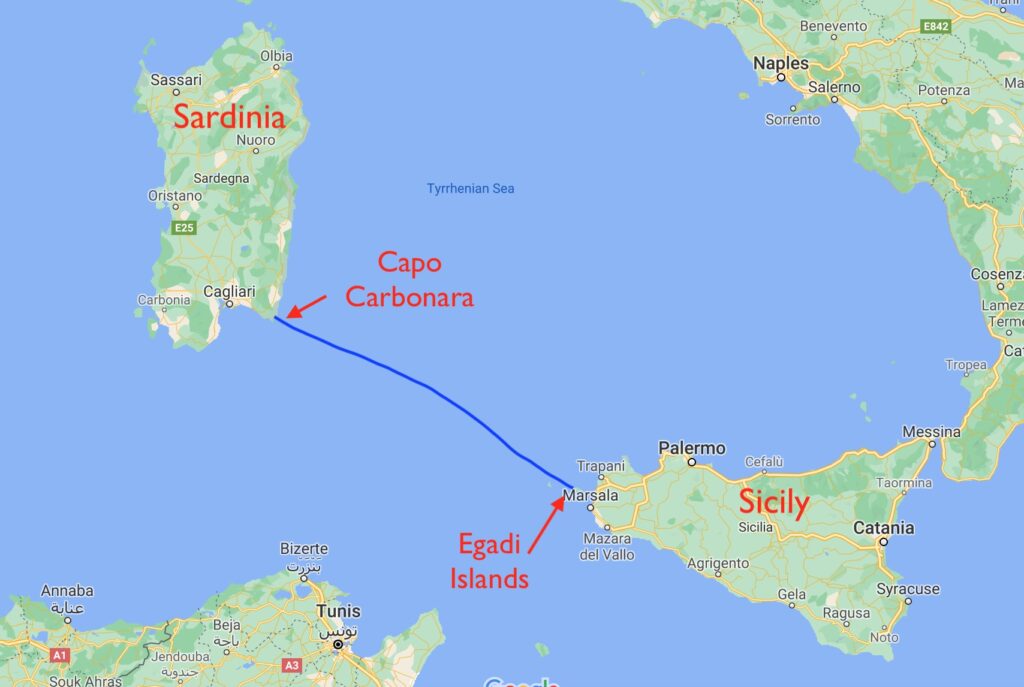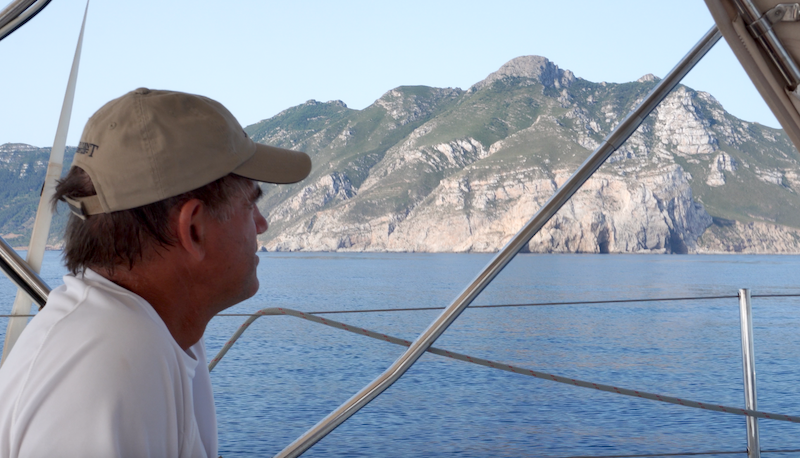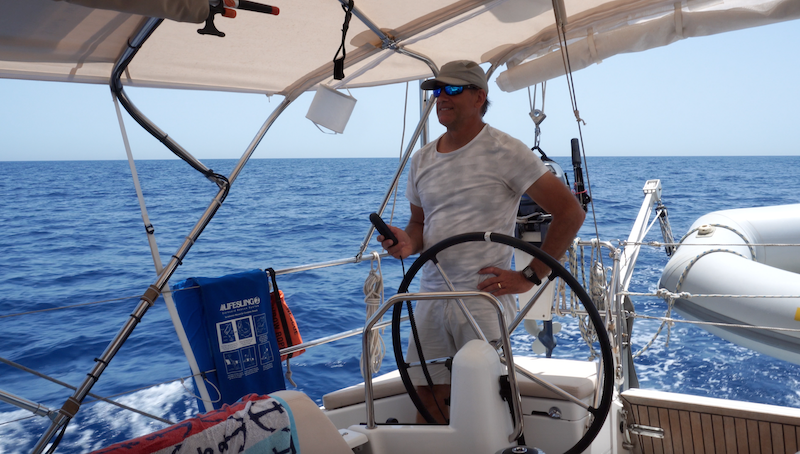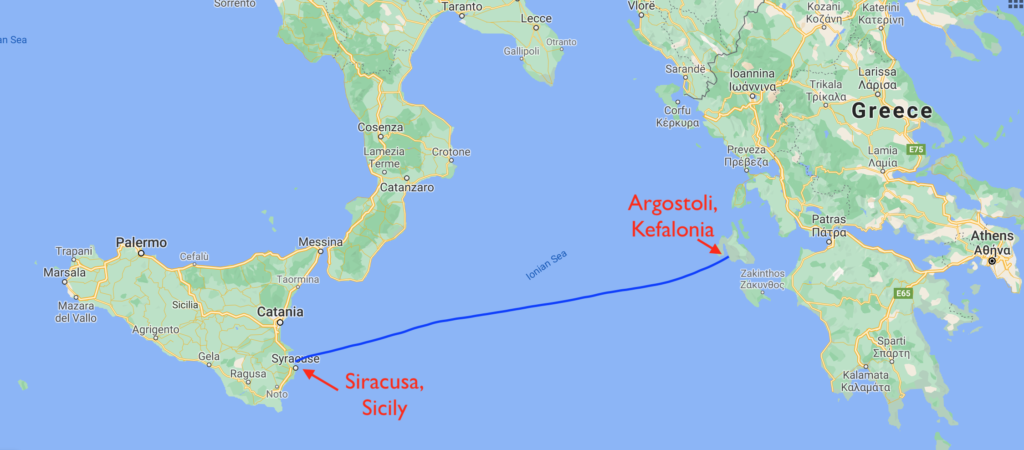As a group, sailors complain a lot about the wind. Either it is not enough, or it’s too much, or it’s come from the wrong direction. Karen and I are likely further jaded by the tempestuous weather of the Med, and the often repeated refrain, “There’s either no wind or too much of it!” But in reality I don’t think it’s a Med-specific phenomenon. When we sailed throughout New England with our young kids, there would be many summer days where we’d be searching for a breathe of wind. As a kid, with my Hobie cat off the beaches of San Diego, it wouldn’t take much to accelerate through the water, yet I spent many weekend days floating on a glassy sea. There’s nothing particularly wrong with this. Sometimes the gift the water can give to us is merely the peace and separation from our troubles ashore. But sometimes you have a destination in mind. And having a suitable wind speed and direction is a highly preferred companion to your solitude.
We knew our stay in the Egadi Islands of western Sicily was going to be cut short. The forecast would only allow us to stay one night. If we didn’t leave right after that, we’d have at least 2-3 days of headwinds to wait out before the crossing to Sardinia. The weather window was now and we had to strike while the iron was hot. The only wrinkle was the wind direction. While the forecast called for about 15 knots of wind, ideal in most situations, it was going to be coming from our stern. The adage, “Fair winds and following seas” is more of a carryover from the old square-rigger days, when the only winds these old ships were designed to handle was from nearly behind you. The modern rigged sailboat can take winds from astern, but is best suited for winds from the side (beam reaching) or close-hauled (at about 45 degrees to the wind). In truth, not many sailors like to go directly down wind. The boat moves slower, the inevitable waves generated by the winds easily push the boat off course, and the motion onboard is a double axis gyroscope of sorts, with the boat rocking from side to side, while also pitching forward and back.










